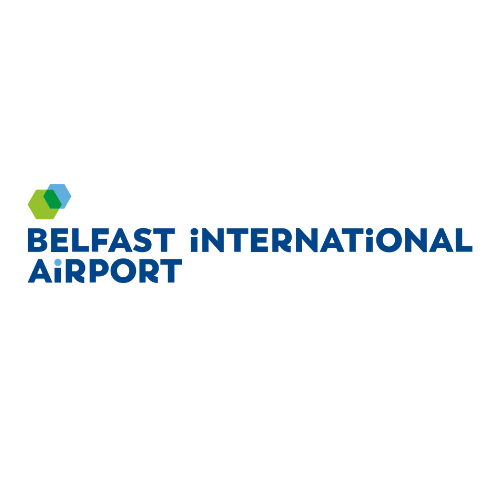According to ACI World, global passenger traffic is expected to reach 9.7 billion passengers in 2024, generating vast amounts of data from passengers, flights, and non-aeronautical services. It raises the potential for airports to have access to a wealth of data that can help improve their operations and services. But managing such a large volume of data can also pose challenges for airports in terms of data handling and use, and this is where data observability comes into play.
Data observability is the ability to monitor data systems in real-time to ensure accuracy, availability, and performance. By employing a data observability platform, airports can use data to discover, triage, and swiftly address data issues as they arise.
This approach not only helps in optimising the current processes but also in foreseeing potential disruptions before they escalate, ensuring that airport operations can adapt and respond effectively to any situation.
Pillars of data observability
Data freshness
Data freshness refers to how current data remains as it’s captured and used. It assesses not only the recency of the data but also how frequently data tables are updated. Having fresh data enables making informed decisions, as outdated data can result in a loss of time and resources.
In environments such as airports, which function 24/7 and where conditions can change quickly, maintaining data freshness reduces the risk of operational disruptions because of decisions made on incorrect information, leading to inefficiencies and additional costs. Data freshness ensures that the information being analysed and acted upon is relevant and timely.
Data volume
Data volume refers to the quantity of data being generated and processed. If large volumes of data are handled ineffectively, it can significantly strain a business’s resources.
By actively monitoring data volume, airports can better manage their data storage and processing infrastructure. This proactive approach allows for timely upgrades and adjustments to handle peak periods without disruption. Monitoring helps identify any unusual changes in data flow, such as spikes or drops, which could indicate operational issues or external challenges impacting the airport.
Data distribution
Data distribution refers to how data is allocated and accessed across different systems and locations within an organisation. This involves ensuring that data is not only available but also consistent across various platforms and networks.
For airports, proper data distribution means that all necessary data — such as flight schedules, passenger information, and baggage tracking — are shared across various systems and stakeholders. This helps in managing flights efficiently, handling passenger needs effectively, and ensuring luggage reaches the right destination on time.
Data quality
Data quality is determined by the accuracy, completeness, and reliability of data, ensuring that it accurately reflects the situations or processes it represents. When data is of high quality, it is fully detailed and free from errors. For airports, where operations hinge on precise and up-to-date information, the calibre of data can directly impact the efficiency and safety of day-to-day activities.
For instance, accurate passenger information is non-negotiable for security checks and scheduling. Conversely, poor data quality can lead to significant problems, such as operational delays, miscommunication between ground staff and control towers, or even security breaches. These issues not only disrupt airport operations but can also result in financial losses and damage to the airport’s reputation.
Data lineage
Data lineage tracks the journey of data from its origin through various transformations until it reaches its final form. This tracking includes recording each step the data takes, noting any changes made, and documenting the processes it undergoes.
Data lineage enables airport staff to quickly identify and correct errors at their source, preventing these mistakes from escalating into larger issues. For example, if an error in a passenger’s booking details arises, data lineage helps IT teams trace back through the data’s path and understand where the error occurred. This capability is also crucial for compliance, as it provides a clear audit trail that can be reviewed to ensure all data handling meets regulatory standards.
Data lineage also enhances transparency in data handling, which is a regulatory requirement under international data privacy laws like the General Data Protection Regulation (GDPR).
What are the key benefits of data observability?
Increased trust in data
Data observability builds stakeholder confidence by providing transparent and verifiable data processes. For airports, data observability means that all data — from passenger data to flight details — is consistently monitored and validated against errors or discrepancies. This level of oversight ensures that the data shared across airport systems is reliable, fostering trust among key stakeholders, such as airlines, passengers, and regulatory bodies.
Reliable data handling minimises the risk of operational mishaps and security breaches, which are critical in maintaining operational licenses and passenger safety. Ultimately, this trust enhances the reputation of the airport as a secure and efficiently managed facility.
Enhanced operational efficiency
Data observability provides organisations with access to accurate real-time data, which helps to identify bottlenecks, improve capacity, and optimise the allocation of resources.
For airports, proactive data monitoring means that issues such as system overloads or equipment malfunctions can be detected and addressed before they escalate into more significant problems. By enabling quicker responses to emerging issues, data observability helps maintain smooth and efficient airport operations, ensuring that flights can depart on schedule and that safety protocols are rigorously upheld.
Improved customer satisfaction
Data observability enables the customisation of customer experiences by using insights gleaned from observed data to meet individual preferences and requirements.
For example, data observability can help identify frequent flyers and offer them expedited services. This personalised approach ensures that each passenger’s airport experience is smooth and enjoyable across all phases of the passenger journey.
Informed strategic oversight
Data observability offers a complete view of all operational elements, significantly enhancing decision-making processes. This thorough visibility enables airport staff to quickly identify and respond to immediate challenges.
It also supports strategic planning for future developments and operational enhancements. This level of oversight ensures that decision-makers can adapt operations proactively, maintaining operational excellence and preparing the organisation to meet future demands efficiently.
What are the challenges in implementing data observability, and how can Rezcomm help overcome them?
Integration complexity
Introducing new tools into existing data systems often presents significant challenges, particularly when integrating with legacy systems in settings like airports. These systems are critical to daily operations, and updates or changes must be carried out with minimal disruption.
Rezcomm addresses these challenges with its Data Observability Suite, which is specifically designed for seamless integration across varied data systems. It uses APIs and Secure File Transfer Protocol (SFTP) for connectivity, ensuring that it can interface effectively with a diverse range of data sources and formats. This simplifies the integration process and reducing potential disruptions to airport operations.
Scalability issues
Scaling observability solutions to match the growing volume of data is a considerable challenge, especially in airports where data loads fluctuate with increasing passenger numbers and flight operations. To address this, systems must be adaptable and capable of managing these variable data loads without hindrance to ongoing activities.
Rezcomm’s observability solutions scale easily. We use a serverless microservices architecture, which is efficient in managing large data volumes. This setup allows for easy and quick scaling up as data needs grow, without complicated procedures. It also supports fast rollouts across various regions, ensuring the data handling capacity can keep up with the fast pace of airport operations.
Cost implications
Balancing the costs of data observability infrastructure with the benefits it delivers is a significant consideration where the return on investment (ROI) must justify the expenditure. This calculation often includes measuring improvements in operational efficiencies and the enhancement of services that arise from implementing advanced data observability systems.
Rezcomm reduces costs by using a serverless architecture, which cuts down on the need for extensive infrastructure and lowers operational expenses. The platform’s flexibility enables airports to tailor the solution to their specific needs and avoid spending on other features. This financial efficiency and enhances the overall return by improving service delivery and operational capability.
Skill gaps
Managing and optimising an observability platform requires specialised skills, which can create a skill gap, especially in complex environments like airports. This gap often requires targeted training for airport IT staff to ensure they are adept at using specific technologies tailored to airport data environments.
Rezcomm actively addresses these potential skill gaps through its comprehensive support and training services. By providing access to expert consultancy services, Rezcomm aids airports in integrating and making the most of the data observability tools. This approach ensures that airport operations are not only equipped with advanced technology but also backed by a skilled team, leading to smoother operations and enhanced data management capabilities.
Bring data observability to your airport with Rezcomm
Rezcomm’s Data Observability Suite can help you tackle the complexities of managing a modern airport and streamline your operations. It gives you comprehensive operational control, transforming disparate data across all services into a strategic advantage. It’s designed to provide clear, actionable insights through real-time analytics, aiding in better decision-making and quicker response to operational needs. Our dashboards cover essential areas like airport and parking operations, booking data, search demand, web analytics and more.
Get in touch to implement data observability at your airport with Rezcomm.




























